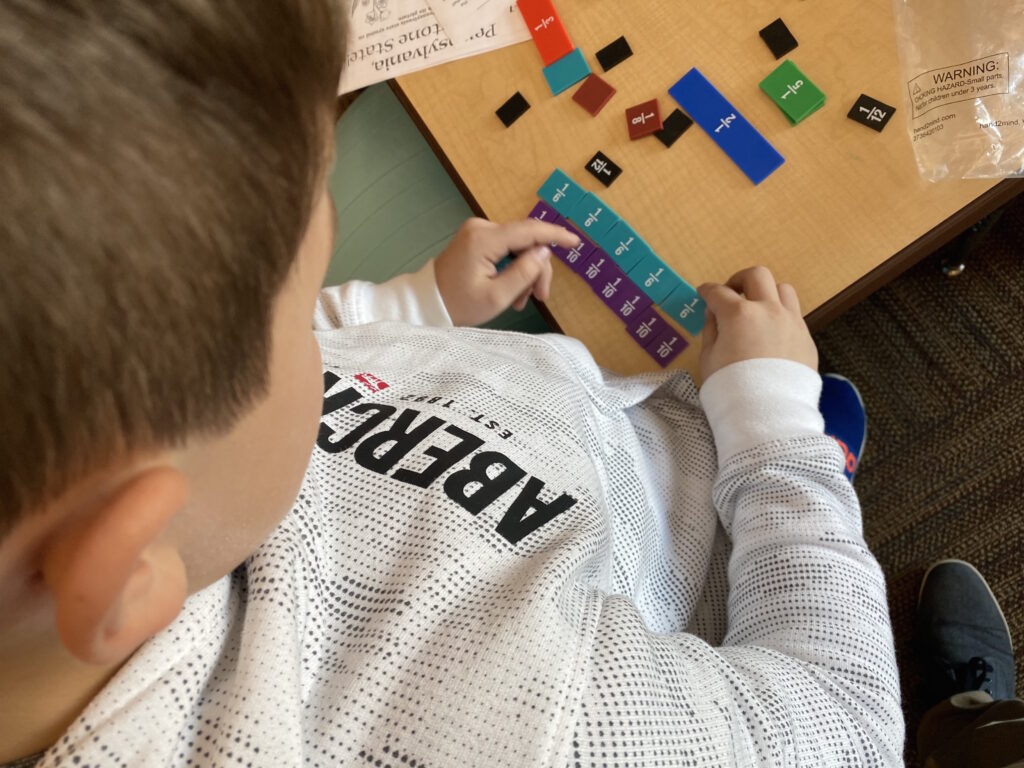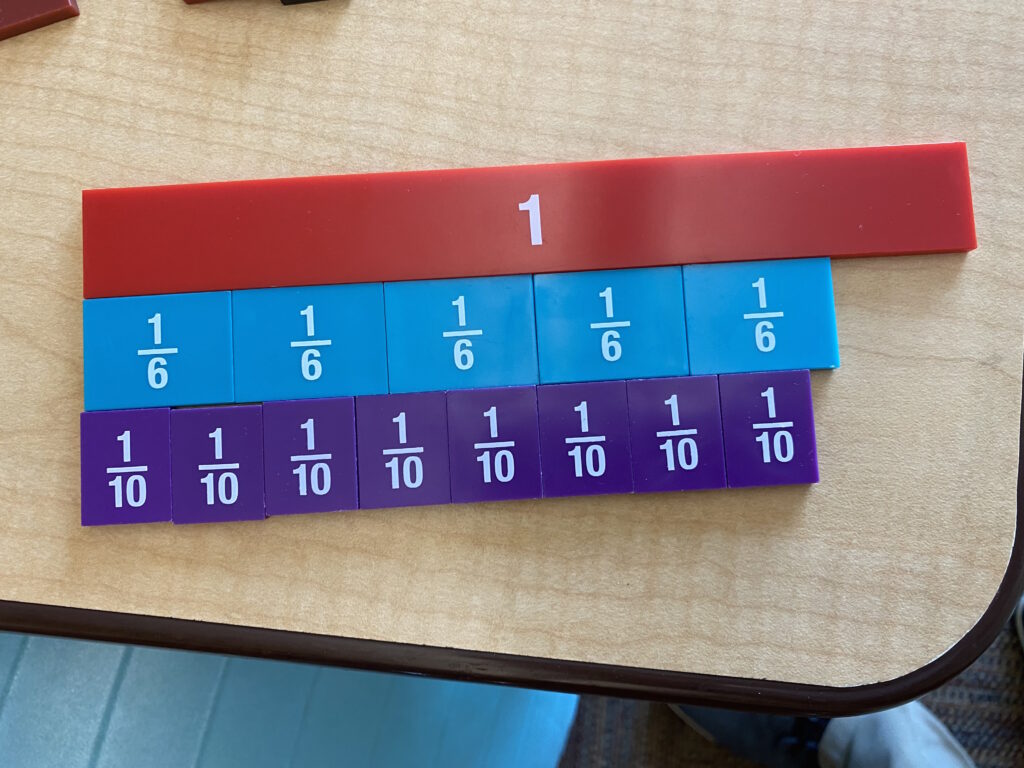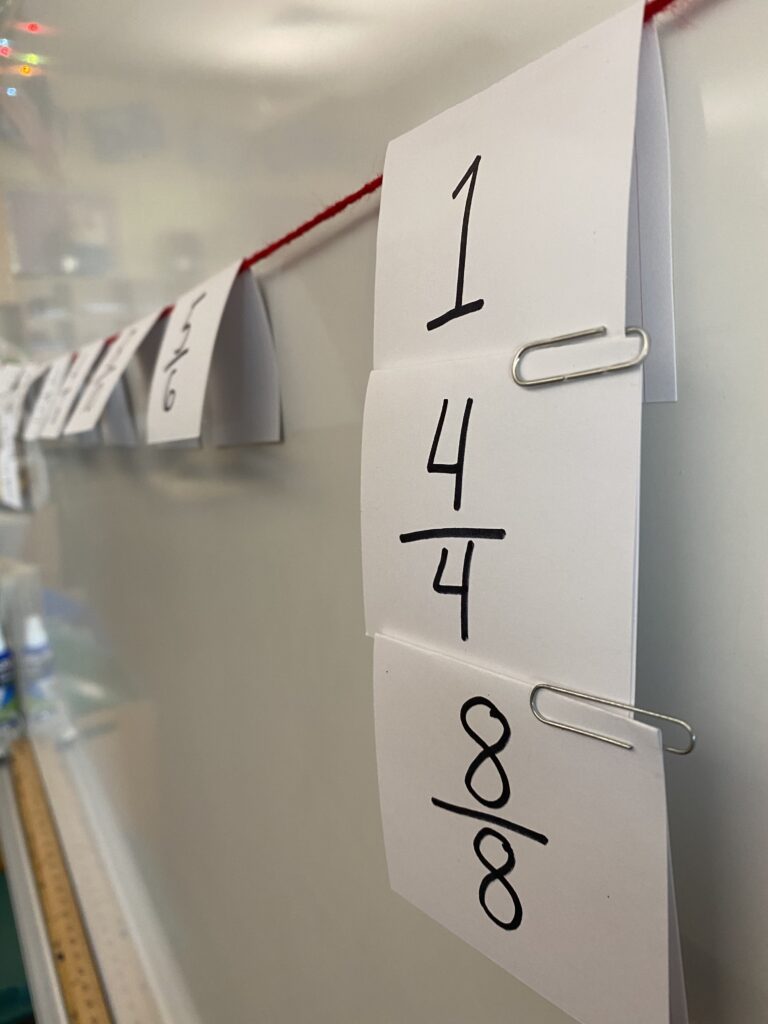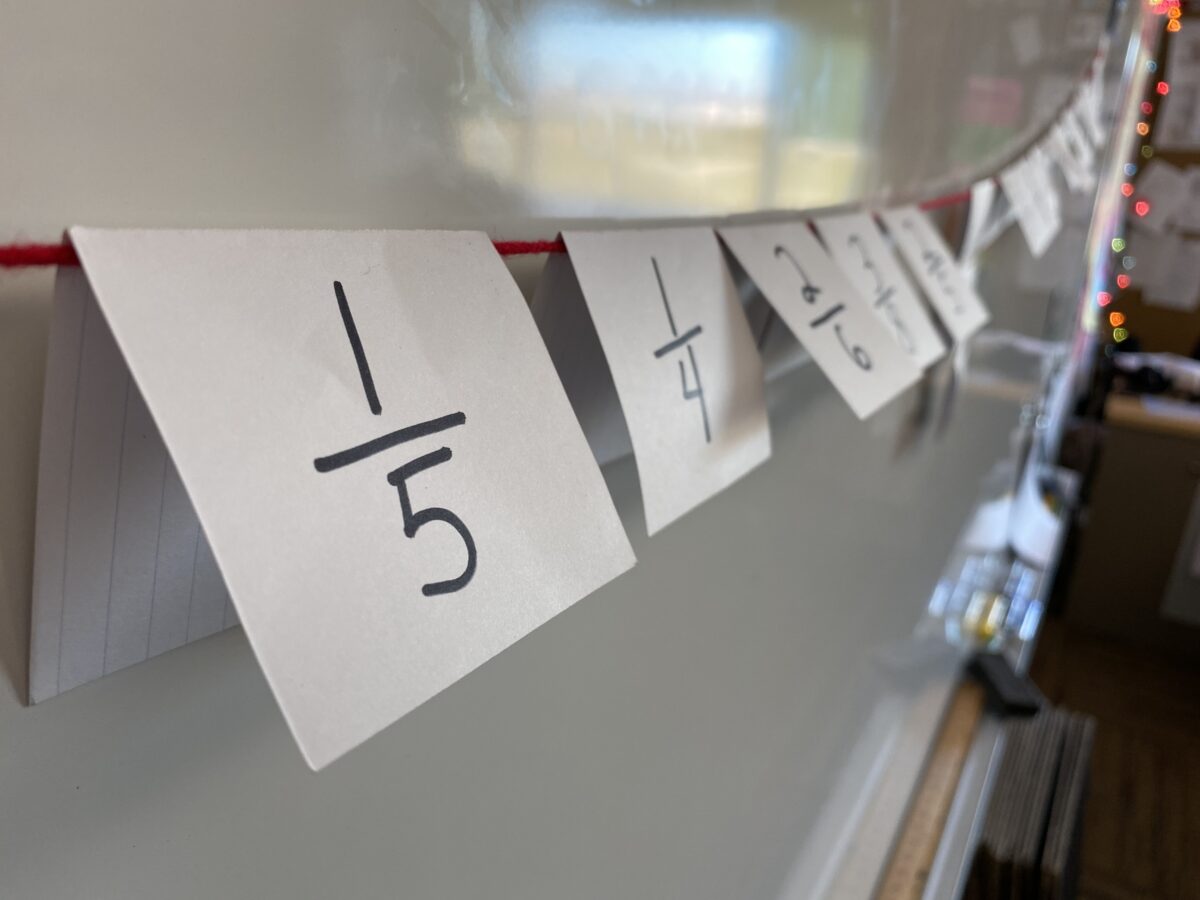We just wrapped up a unit on fractions which covered equivalent fractions, common denominators, simplest form, comparing fractions, and ordering fractions. Comparing and ordering fractions gave me an opportunity to use a strategy which I absolutely love: clothesline math.
As the name suggests, I put a clothesline up in my room (really just a piece of yarn) and students use it to create a number line. It’s a great strategy because it works with whole numbers, fractions, decimals, algebra, and on and on.
I fold a notecard in half and write the fraction on one half. This allows the fold of the card to hold the number on the clothesline. Since I’m writing the numbers myself, I can make the numbers fit whatever lesson or standard I need. For example, in Pennsylvania fourth graders are only comparing fractions with denominators limited to 2, 3, 4, 5, 6, 8, 10, 12, and 100. So, I create fractions cards which fit those parameters.
There are times when I will place cards on a table and let students choose their own number. Other times, I want to be a little more strategic with who gets each card, so I will distribute them to students. This allows me to ensure that students are getting fractions that match their math abilities. I give students who have a better grasp of the concepts fractions which are in the sixths, while struggling students might only get fourths. If a student has to draw a model of a fraction, it is easier to draw fourths as a visual representation than sixths.
Once all students have the cards, we discuss which numbers should be placed on the clothesline first. Yesterday, my students determined that 0 and 1 should be the first two numbers. Then they decided that 1/2 should go next because it is the benchmark we used in our lessons on comparing and ordering fractions.
Once we have 0, 1/2, and 1 placed, we start to have a discussion about the other fraction cards. I allow students to talk with a partner as we move through the numbers. When students go to place their fraction, they have to share three things:
- Say the fraction
- Share which two numbers their fraction goes between
- Explain, using math vocabulary why you placed it there (common denominators, common numerators, relative location to the benchmark, etc.)
Once we get started, my role is to simply facilitate the conversation. I don’t tell students whether they are right or wrong when they place their fraction. Yesterday, three of the fractions were placed in the wrong spot. Once every student placed their card, I asked if there were any changes we needed to make. Then the conversation moved into a bit of error analysis. After some discussion and debate, the cards were placed in the correct order. Once again, I let my students talk about what they saw and what needed to be changed.
Students were drawing models on whiteboards, comparing fractions using common denominators, and one student even asked to use the fraction tiles we have in our room to model his fraction.


This is such a wonderful activity because it checks so many boxes. In addition to comparing and ordering, students are experiencing many of the Standards for Mathematical Practice. Students are constructing viable arguments and critiquing the reasoning of others, modeling with math, attending to precision, and looking for and making use of structure. I am a stickler about precision in this activity. One student said, “The number on the top in 4/8 is smaller than the number on the top in 5/8.” I will ask them what we call the number on the top and ask them to restate their reasoning. “The numerator in 4/8 is smaller than the numerator in 5/8.” If the students stops there, I will prompt them. “What does the numerator represent?” I will prompt the students until they explain that the numerator in 4/8 represents 4 parts, and the numerator in 5/8 represents 5 parts. The parts are the same size since the denominators are the same, so 5/8 is greater than 4/8.”
I also make sure there are some equivalent fractions included in the cards. When students have an equivalent fraction, they use a paperclip to stack the numbers to show they fall on the same point on the number line, or clothesline.

Each year I introduce this as a whole-group lesson. This allows students to experience those rich conversations with students of all math abilities. Then I use it as a small group activity. Students work in groups of 3-4 and deal cards to one another. They take turns placing their cards and have a similar discussion. As an exit slip, I’ll have students choose three fractions and write how they ordered them. This can also be done by taking a picture and using an app or other digital sharing tool.
This is a great activity that can be used in so many applications throughout the grade levels. The conversations are fantastic, and students are engaged in the activity. Hopefully you find it as valuable as I do.
